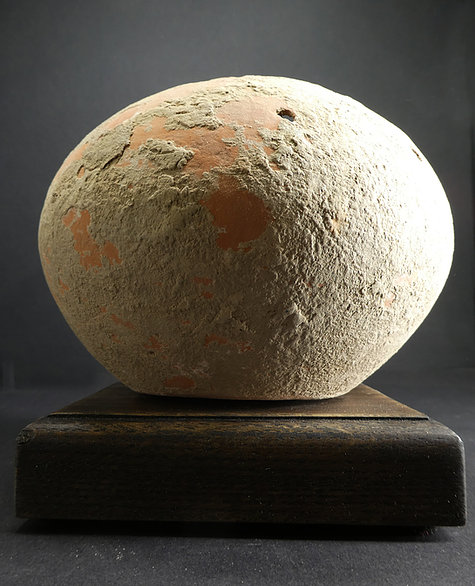Description
Here we have a 3000 - 4000-year-old terracotta dipper cup from Britain's Bronze Age. The vast majority of Bronze Age and Iron Age pottery on today's arts and antiquities markets come from burial mounds (or tumuli) which are common in the British countryside, and the majority of which were excavated in the Victorian period. Pottery vessels of this period typically consisted of urns, beakers, bowls, dipper cups, pots, and as we have here, jars. Other than two small holes as shown in the photographs, the jar is almost entirely intact and displays a globular body. Mounted on a plinth of oak.
–
Provenance: Acquired by Timeless in 2020, previously the property of a West Essex gentleman. Formerly in a 1980s collection of ancient ceramics.
Age: c. 1400 – 800 BC
Period: Bronze Age Britain
Size:
Weight:
Bronze Age
The Bronze Age is a prehistoric period that was characterised by the use of bronze, in some areas proto-writing, and other early features of urban civilisation. The Bronze Age is the second principal period of the three-age Stone-Bronze-Iron system, as proposed in modern times by Christian Jürgensen Thomsen, for classifying and studying ancient societies.
An ancient civilisation is defined to be in the Bronze Age either by producing bronze by smelting its own copper and alloying with tin, arsenic, or other metals, or by trading for bronze from production areas elsewhere. Bronze is harder and more durable than other metals available at the time, allowing Bronze Age civilisation’s to gain a technological advantage.
Chalcolithic Europe
The Chalcolithic (also Aeneolithic, Copper Age) period of Prehistoric Europe, lasted roughly from 3500 to 1700 BC.
It was a period of Megalithic culture, the appearance of the first significant economic stratification, and probably the earliest presence of Indo-European speakers.
The economy of the Chalcolithic, even in the regions where copper was not yet used, was no longer that of peasant communities and tribes: some materials began to be produced in specific locations and distributed to wide regions. Mining of metal and stone was particularly developed in some areas, along with the processing of those materials into valuable goods.

British Bronze Age Jar – Excavated during the Victorian Period 
British Bronze Age Jar – Excavated during the Victorian Period 
British Bronze Age Jar – Excavated during the Victorian Period 
British Bronze Age Jar – Excavated during the Victorian Period 
British Bronze Age Jar – Excavated during the Victorian Period
